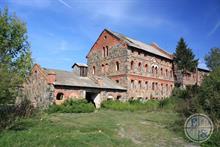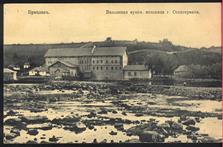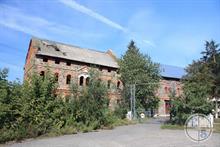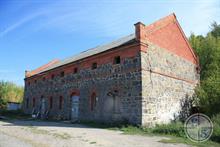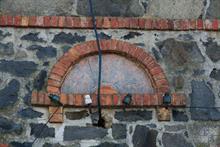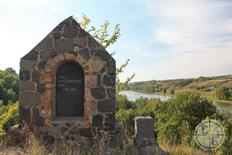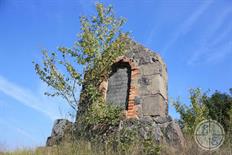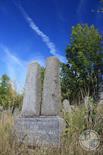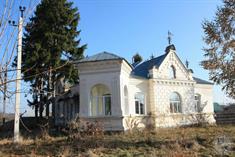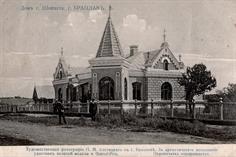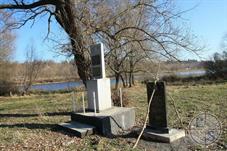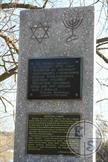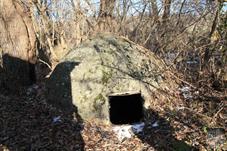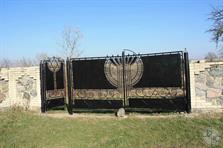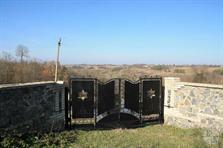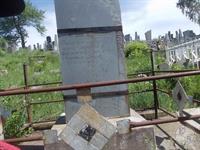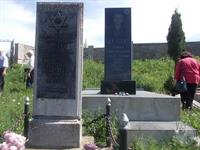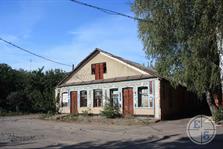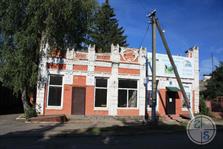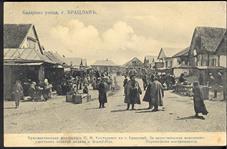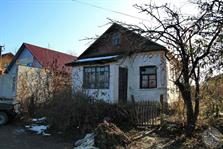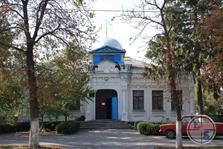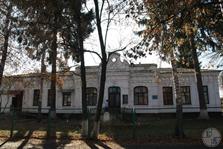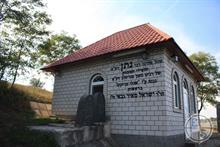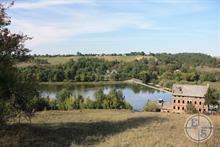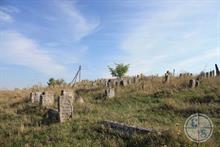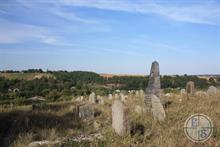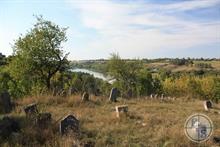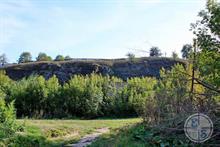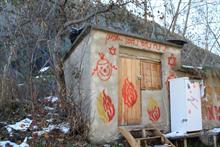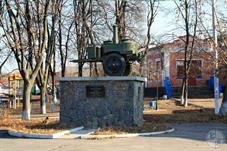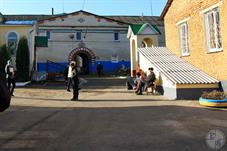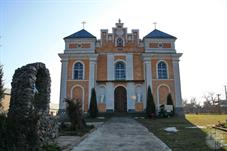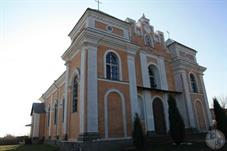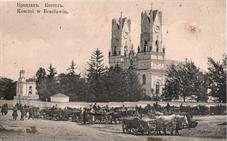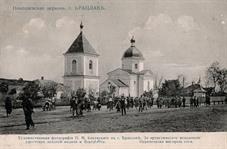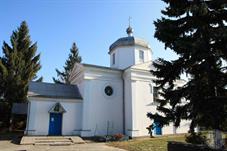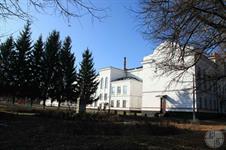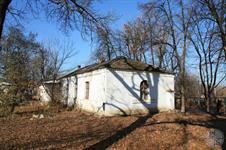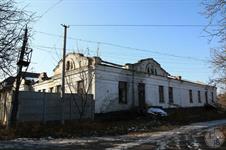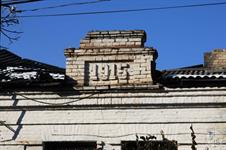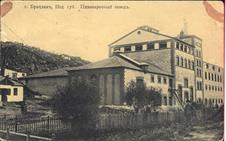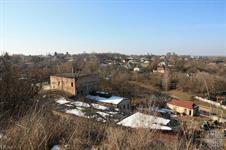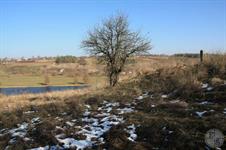Bratslav
Jews began to reside in Bratslav in the late 15th or early 16th century. During the 16-18th centuries Bratslav's Jews suffered greatly from the raids of Tatars and Cossacks.
In the 17th century Bratslav became an important Jewish religious center. Early in the century followers of the false messiah Sabbatai Zevi found refuge in the town, while the founder of Bratslav Chassidism, Rabbi Nakhman (also known as Nakhman of Bratslav), lived there in the following century.
In 1897 Bratslav had 3,290 Jews, who comprised 41.8 percent of the town's total population.
Bratslav's Jews suffered greatly from the calamities of the revolutionary years and the civil war in Russia.
Between 1918 and 1920 more than 10 pogroms were staged in the town. In one of the pogroms, in April 1919, about 200 Jews were killed. A Jewish self-defense organization was organized but, due to its lack of weapons, it was ineffective.
In the 17th century Bratslav became an important Jewish religious center. Early in the century followers of the false messiah Sabbatai Zevi found refuge in the town, while the founder of Bratslav Chassidism, Rabbi Nakhman (also known as Nakhman of Bratslav), lived there in the following century.
In 1897 Bratslav had 3,290 Jews, who comprised 41.8 percent of the town's total population.
Bratslav's Jews suffered greatly from the calamities of the revolutionary years and the civil war in Russia.
Between 1918 and 1920 more than 10 pogroms were staged in the town. In one of the pogroms, in April 1919, about 200 Jews were killed. A Jewish self-defense organization was organized but, due to its lack of weapons, it was ineffective.
Bratslav, 2012, 2014, 2015
Vinnitsa Region
During the early stages of Soviet rule Jews in Bratslav engaged mostly in commerce and crafts. After the abolition of private enterprise many Jews became factory workers or clerks. In the 1920s and 1930s Bratslav had a Yiddish school. In the interwar period many Jews, especially younger ones, left Bratslav in search of further educational and job opportunities.
In 1939 Bratslav's 1,010 Jews comprised 25.4 percent of the town's total population.
Many Jews succeeded in leaving Bratslav before it was occupied by German and Romanian forces on July 22, 1941. Soon after the start of the occupation Jews were forced to wear yellow Stars of David on their clothes.
The killings of Jews also started during the first weeks of the occupation. In September 1941 the town became part of the Romanian occupation zone of Transnistria and Jewish deportees from Bessarabia and Bukovina were transported to it. About 750 Jews from Bratslav itself and from the County were imprisoned in the ghetto, which they were permitted to leave once a week to obtain water and to buy food at the local market. Inmates of this ghetto were maltreated, robbed of their possessions, incarcerated, forced to perform various types of hard labor, and were shot. During the night between December 31, 1941 and January 1, 1942 most of the inmates of the Bratslav ghetto were sent to the Pechora death camp, although some Jews were left in Bratslav to carry out road construction work.
In 1939 Bratslav's 1,010 Jews comprised 25.4 percent of the town's total population.
Many Jews succeeded in leaving Bratslav before it was occupied by German and Romanian forces on July 22, 1941. Soon after the start of the occupation Jews were forced to wear yellow Stars of David on their clothes.
The killings of Jews also started during the first weeks of the occupation. In September 1941 the town became part of the Romanian occupation zone of Transnistria and Jewish deportees from Bessarabia and Bukovina were transported to it. About 750 Jews from Bratslav itself and from the County were imprisoned in the ghetto, which they were permitted to leave once a week to obtain water and to buy food at the local market. Inmates of this ghetto were maltreated, robbed of their possessions, incarcerated, forced to perform various types of hard labor, and were shot. During the night between December 31, 1941 and January 1, 1942 most of the inmates of the Bratslav ghetto were sent to the Pechora death camp, although some Jews were left in Bratslav to carry out road construction work.
In February 1942 about 20 Bratslav Jews, mostly children and elderly people, were shot. In the spring of 1942 some of the Jews who had initially been left in Bratslav were also transferred to the Pechora camp; several of them were shot on the way. In the Pechora camp many of the prisoners died from starvation, disease, and the cold or were shot by guards while trying to escape.
In 1942 some of the inmates were transferred from Pechora to a labor camp in Zarudintsy, north of Bratslav.
Jewish deportees from Bukovina and Bessarabia and from various regions of Ukraine were incarcerated in two camps established in Bratslav in August 1942 to provide labor for German construction firms. Most of the inmates of the camps in Bratslav were murdered in several murder operations in 1942-1943.
The Red Army liberated Bratslav on March 17, 1944. At liberation only 200 Jews from Ukraine and 20 or 30 Jews from Bukovina and Bessarabia remained alive in Bratslav.
In 1942 some of the inmates were transferred from Pechora to a labor camp in Zarudintsy, north of Bratslav.
Jewish deportees from Bukovina and Bessarabia and from various regions of Ukraine were incarcerated in two camps established in Bratslav in August 1942 to provide labor for German construction firms. Most of the inmates of the camps in Bratslav were murdered in several murder operations in 1942-1943.
The Red Army liberated Bratslav on March 17, 1944. At liberation only 200 Jews from Ukraine and 20 or 30 Jews from Bukovina and Bessarabia remained alive in Bratslav.
More detail you can read on the Russian-language version of the site, as the English version in the process of finalizing

My shtetl
My shtetl
Jewish towns of Ukraine
Jewish towns of Ukraine
